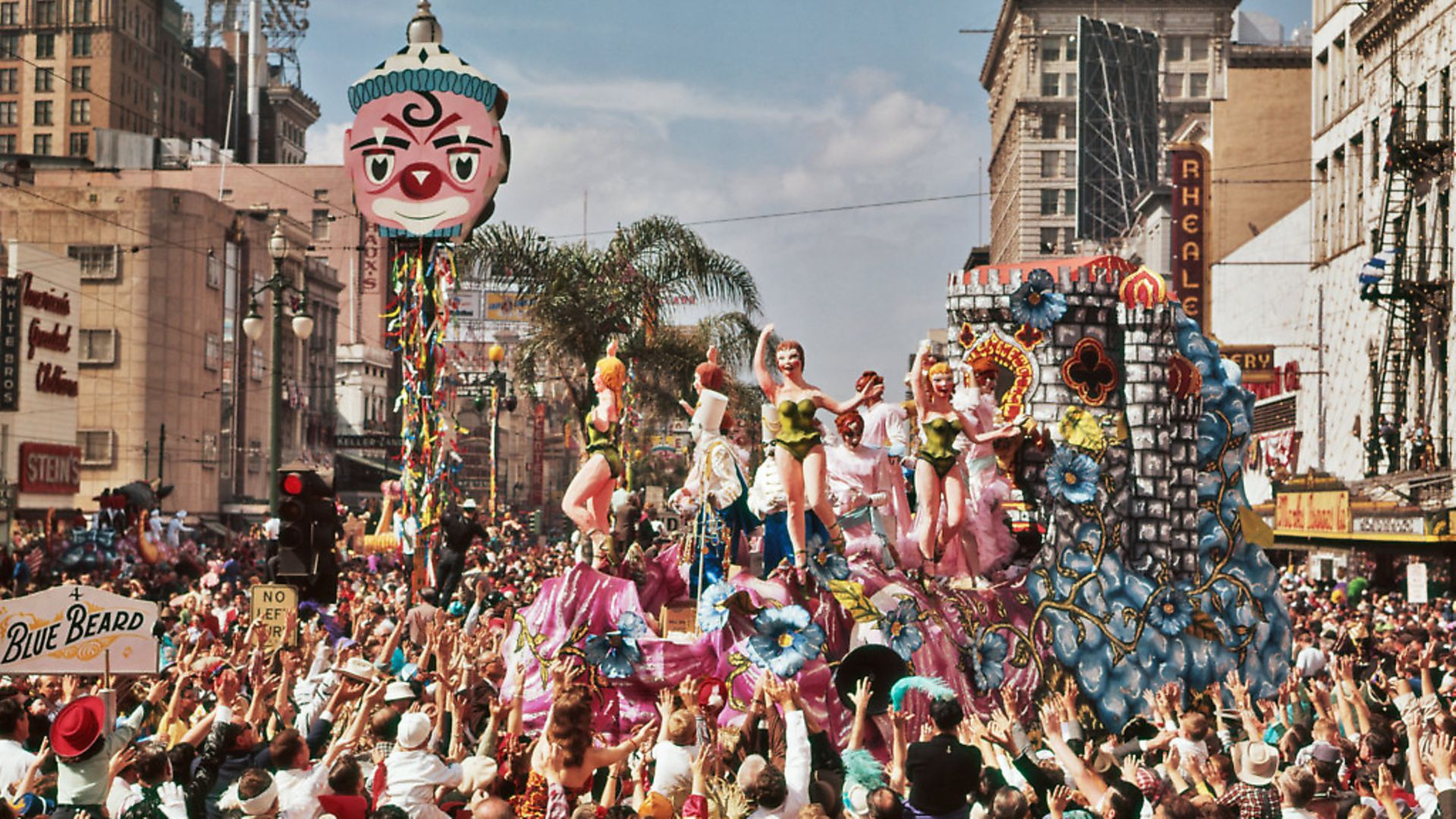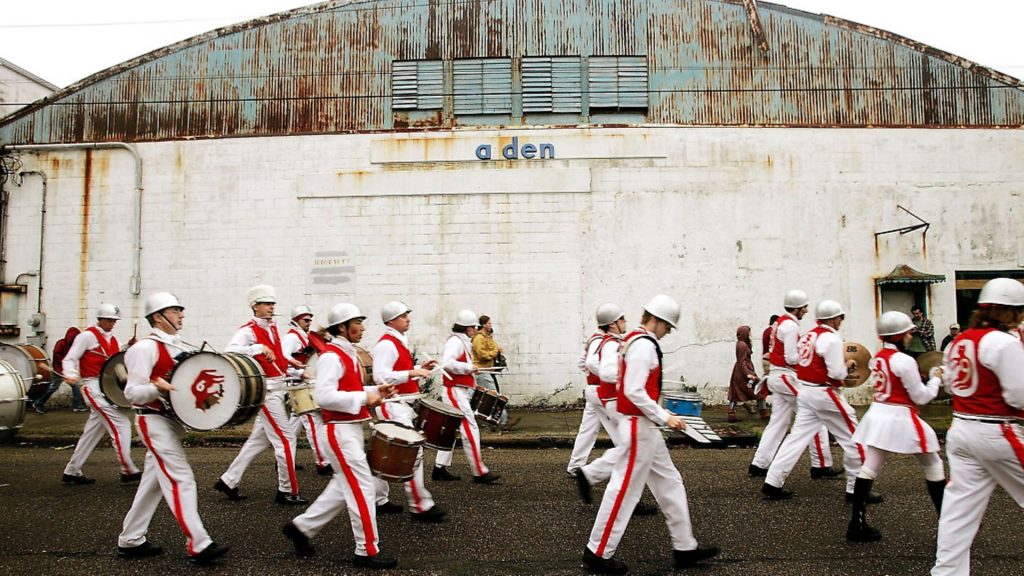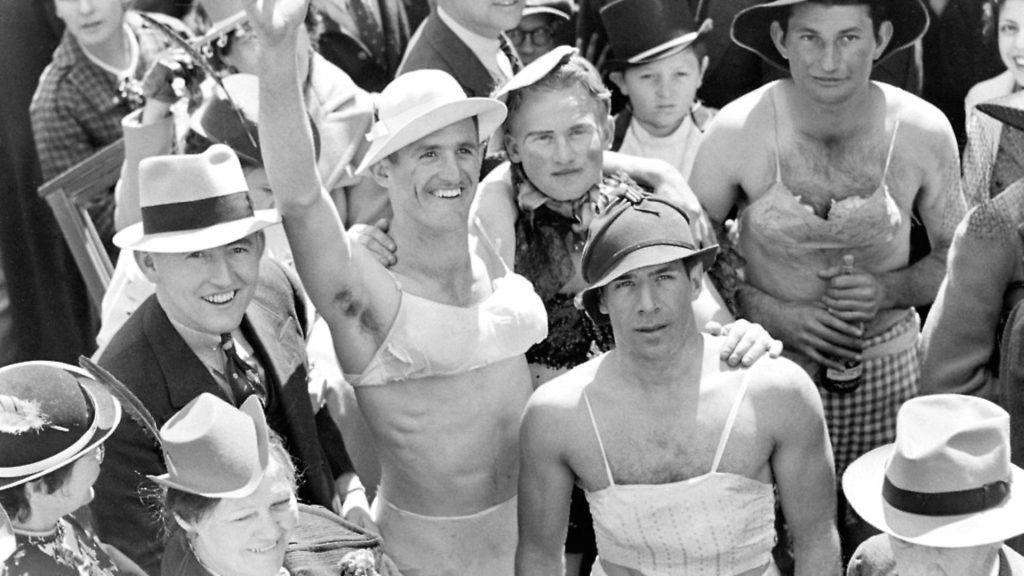
As New Orleans gears up for Mardi Gras, RICHARD HOLLEDGE explains how it is more than just a party.

It’s party time in New Orleans. Well, it’s always party time in New Orleans. But later this month is Mardi Gras – 12 days of parades, fun and good-natured bad behaviour, which reaches a gaudy crescendo on February 25 – Fat Tuesday.
That’s the day (and night) when the biggest of the parades, the most extravagant floats and the grandest of the parties shimmer and shout their way around the city.
The French Quarter, home of the never-ending shindig, goes crazy on Huge Ass Beer and killer Hurricane cocktails from Pat O’Brien’s Bar, usually nicely-behaved gals flash their breasts at crowds on the balconies of Bourbon Street for the reward of a string of beads. #MeToo movement? Forget it. The bands blare out, men dress as nuns, girls as tarts and everyone goes to the devil.
But there is more to Mardi Gras than a party. It is about race and class, art, culture and identity. It symbolises the gumbo of ethnicities which make up a contrasting city, in which, for a few days, black and white, the moneyed elite and the homeless sheltering under the flyovers of Interstate 10, unite in a raucous brotherhood. (For the uninitiated, gumbo is a strongly-flavoured stock of meat or shellfish and what locals call the “Holy Trinity” of vegetables, bell peppers and onions.)

That symbolism was well expressed in 2006, six months after Hurricane Katrina had all but destroyed the place, taking 1,800 lives with it. Many thought a jamboree as excessive as Mardi Gras should be cancelled but Paul McIlhenny, the late president of Tabasco, the potent pepper sauce manufacturer, disagreed most vehemently. He had been elected Rex, or King, of the Carnival, an arcane role which owes more to the pomp of a mediaeval monarchy than republican America, and declared: “If there was any time when we needed distraction, digression, diversion from the grind, it’s Mardi Gras. We need to let it all hang out and, in the sense of pre-Lenten revelry, make sure we relax and recreate.”
And they did. Parading past half-empty hotels through streets darkened by electricity failures and playing their way out of communities which had been flooded and wrecked beyond redemption. This was for the people by the people and it was impossible not to be moved by such noisy defiance.
That sense of pre-Lenten revelry was first recognised in America in March 1699, when the French explorers Pierre Le Moyne d’Iberville and Sieur de Bienville landed near present-day New Orleans and held a low-key celebration. They were following a tradition which dated back to the pagan festivals of spring and fertility and embraced by the new Christian emperors of Rome who decided to incorporate these popular traditions in the guise of Fat Tuesday - or Shrove Tuesday as it is known in Britain.
As this was on the eve of 40 days of fasting and penance, naturally, everyone indulged in eating and drinking as much as possible. As Christianity developed, Mardi Gras spread from Rome to France, Germany, Spain and England and on to colonies such as Brazil. But few embraced the day with more conspicuous enthusiasm than New Orleans with its street parties, masked balls and lavish dinners.
All that ended in 1763 when Louisiana came under Spanish rule and the festivities were not revived until the state was sold to the US in 1812. The earliest parade took place in 1837 but the party really took off on a grand scale in 1857 when the first Mardi Gras with themed floats was held. Its beginnings were rather elitist – it was organised by six Anglo-American businessmen who were inspired by the pomp and pageantry of European royalty, something of an irony considering the American colonies had kicked out George III and all pomp and pageantry he represented in 1783.
They called themselves the Mistick Krewe of Comus – krewe an archaic spelling of crew and Comus as a nod to Milton’s masque in which a virtuous lady is ensnared by an evil character inspired by the god of revelry. Very New Orleans.
Other krewes followed; the biggest and best known, Rex, was set up by local entrepreneurs in 1872, partly in honour of some long-forgotten Russian arch-duke who was in the city during the carnival season but also to lure tourism and business to a New Orleans struggling economically after the American Civil War.
Their surprise would be matched by their delight if they knew that about 1.4 million party lovers descended on the city for Mardi Gras in 2018, spending a staggering $164,274,980 (£127million).
Membership of the five earliest clubs – Rex, Comus, Momus, Twelfth Night and Proteus – was secret and restricted to the city’s prosperous European population. But that secrecy was challenged in 1991 when the city council passed an ordinance that required social organisations, including the krewes, to certify publicly that they did not discriminate on the basis of race, religion, gender or sexual orientation.
Rex agreed but Comus refused and to this day they do not join the parades, though they still join elegant forces with Rex to hold their annual ball on Mardi Gras night.
Rex is perhaps the grandest of the krewes: it provides the Carnival King who rules for the day, dressed up in robes befitting a parody potentate and adorned wig, beard and moustache, doublet, hose and satin mask.
There are about 700 members of Rex, of whom about 450 will ride on the 27 floats, many still balanced on old wooden wagons, led by 36 mounted lieutenants in purple, green and gold, which symbolise justice, faith and power. A captain on a white horse leads the way.
The designs of the floats are kept secret, hidden in the Rex Den, a cavernous flat pack warehouse on the outskirts of the city whose anonymity hides the extravagance within.
Here, from the moment one Mardi Gras ends, designers work on what becomes a rolling art exhibit, a moving theatre in papier-maché.
The themes are dreamed up three to four years in advance with this year’s entitled, “Omens and Auguries”, a spectacular explosion of colour, capturing mankind’s yearning to “divine the future,” as Dr Stephen Hales the Rex archivist explains.
“The ancients looked to the heavens and to the natural world to find prophetic signs and symbols and our floats will include the Zodiac, the ancient prophetesses of Sybil as well as representations of the Ides of March when Julius Caesar was assassinated and the Three Witches from Macbeth.”
The result, when added to the cheering crowds, the trumpets and the drums, the hurling of beads, doubloons and fake jewels is not just a sensory overload but, perhaps, a reassuring expression of glamour and privilege which is perpetuated by the balls which follow.
Again, secrecy is all; invitations are coveted, and eager guests are prepared to pay $120,000-plus to attend. In a throwback to a quaint ceremony in which upper crust debutantes were presented at the royal court – abolished by class-conscious Britain in 1976 – this is the moment the young, wealthy, women of New Orleans are given their formal introduction to society.
Even in the dark days post-Katrina, when the normally hectic Canal Street was half-lit and the French Quarter shrouded in gloom, women in their finest frocks and men in starched tuxedos traipsed to the Marriot Hotel for the debutantes’ ball to witness daughters being escorted around the dance floor by proud daddies.
Their simpers of embarrassment were more than matched by smiles of delight as they curtsied to the king and queen of the krewe and teetered backwards in high heels to their place in the crowd – after all, one must never turn one’s back on royalty.
But Mardi Gras is by no means only about the elite. Small krewes born out of specific interests and communities such as the Fools of Misrule, whose slogan is Vivere vitam omnino – Live life completely – have their day, as do the Knights of Babylon, founded in 1939 by a group of professionals called the Jester’s Club, and the self-explanatory Kre de Paws of Olde Towne which is based at the Cafe du Bone Dog Bakery and Boutique. The Krewe of Bosom Buddies uses brightly coloured bras as throws.
But it is the music of the slaves and the African American community that has made the Big Easy celebrated and it is their spirit which gives Mardi Gras its beat. On February 25, the luxuriant blooms of the Rex floats will be preceded by a noisier krewe – the Zulus – or to give them their full title, the Zulu Social Aid and Pleasure Club.
As the title suggests, the club, which was formed in 1916, has a mission not just to party, but to dedicate itself to “benevolence and goodwill and help the struggling”.
Its costumes are wildly exotic; feathers, sequins and towering head dresses which echo the ebullient rituals of African ancestors but here there is a race issue within a race issue. The Zulus black up. This counter-intuitive gesture was born at the turn of the last century when they took severe offence at a group of white vaudevillians who had painted their faces black, wore straw skirts, and tossed coconuts around for a theatrical skit caricaturing a Zulu tribe.
It was, and is, meant to be satire, but not everyone sees the joke. In the 1960s opponents to the stunt advertised in the black community’s newspaper the Louisiana Weekly: “We, the Negroes of New Orleans, are in the midst of a fight for our rights and for a recognition of our human dignity. Therefore, we resent and repudiate the Zulu Parade, in which Negroes are paid by white merchants to wander through the city drinking to excess, dressed as uncivilised savages and throwing cocoanuts (sic) like monkeys.”
The krewe ignored them but last year the racial justice group TakeEmDown NOLA reignited the debate by protesting in front of the club’s headquarters, demanding that it renounce blackface as a legacy of white minstrel shows which mocked African-Americans as “uncivilised simpletons”.
The club that day responded by painting on black face and calling up a band to drown out the protests. Whether it is satire or a betrayal, the presence of the Zulus is a far cry from the elitist early days of the krewes. So too is the appeal of the quintessentially New Orleans’ music heritage – the second line.
Historically, the African American community have taken part on the fringe of the big parades, in what are known as first and second lines. The first is a funeral march with a band led by the grand marshal or parade leader in a snazzy suit and jaunty hat, wielding a decorated umbrella.
Behind them, the second line – the ultimate New Orleans art form – a jazz funeral without a body.
Second liners might be connected to the deceased, just as likely not, but if a band breaks out in your neighbourhood you’re going to join in, following as the musicians and an ever-growing crowd sing and dance their way from bar to bar.
Big names come out during Mardi Gras such as the Rebirth Brass Band, the Hot 8 Brass Band, and the Free Spirit Brass Band. Last year the Tremé Sidewalk Steppers led second liners past a bar or two – and oddly, a barber shop – to the Mother in Law Lounge owned by rambunctious trumpeter Kermit Ruffins who, between blasts of brass, serves up burgers on his mobile barbecue which he keeps parked on the street.
It is a legendary joint once owned by R and B singer Ernie K-Doe and where for years after his death his wife kept a life-size wax figure of her late husband by the bar. A tad unnerving.
It is tempting to say that these boisterous parties are where the outsider finds the authentic New Orleans, but without the pastiche “royalty” of the krewes and their exotic floats or the quaint formality of the debutante balls, the sophisticated, sleazy, alchemy that makes up New Orleans would be lost.
It is thanks to that gumbo of dreams that everyone can unite for a few hectic days in the quest for “distraction, digression and diversion”.










